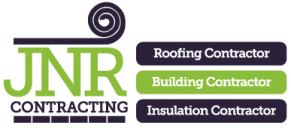Ventilation plays a critical role in maintaining the health and integrity of buildings. Poor ventilation can lead to a myriad of issues, affecting not only the structural integrity of the building but also the health and well-being of its occupants. This article explores the effects of inadequate ventilation on indoor air quality, structural integrity, and occupant health, and provides practical solutions for improving ventilation.
The Importance of Ventilation
Ventilation is the process of exchanging indoor air with outdoor air to improve indoor air quality. It helps to remove moisture, odours, smoke, heat, dust, airborne bacteria, carbon dioxide, and other pollutants. Effective ventilation systems are essential for maintaining a healthy indoor environment.
Effects on Indoor Air Quality
Accumulation of Pollutants
Inadequate ventilation can lead to the accumulation of indoor air pollutants. These pollutants can come from various sources, including building materials, cleaning products, and human activities. Common indoor pollutants include volatile organic compounds (VOCs), carbon monoxide, radon, and particulate matter.
Increased Humidity and Mould Growth
Poor ventilation often results in increased indoor humidity levels. High humidity can create a breeding ground for mould and mildew, which can release spores into the air. These spores can cause allergic reactions and respiratory problems in occupants.
Dust and Allergen Buildup
Without proper ventilation, dust and allergens can accumulate in the indoor environment. These can trigger asthma, allergies, and other respiratory issues, particularly in vulnerable individuals such as children and the elderly.
Effects on Structural Integrity
Moisture Damage
One of the primary consequences of poor ventilation is moisture buildup. Excess moisture can lead to a range of structural problems, including wood rot, peeling paint, and weakened foundations. Over time, this can significantly compromise the integrity of the building.
Condensation Issues
Condensation occurs when warm, moist air comes into contact with cold surfaces, leading to water droplets forming on windows, walls, and ceilings. Persistent condensation can damage plaster, wallpaper, and wooden structures, and can also contribute to the growth of mould and mildew.
Accelerated Deterioration of Materials
Materials used in construction, such as wood, plaster, and insulation, can deteriorate more quickly in poorly ventilated environments. This not only reduces the lifespan of these materials but also increases maintenance costs and the need for repairs.
Effects on Occupant Health
Respiratory Problems
Exposure to poor indoor air quality can lead to a range of respiratory problems, including asthma, bronchitis, and other chronic lung diseases. Pollutants such as dust, mould spores, and VOCs can irritate the respiratory system and exacerbate existing conditions.
Allergies and Asthma
Inadequate ventilation can increase the concentration of allergens, such as dust mites and pet dander, in the indoor environment. This can trigger allergic reactions and asthma attacks, leading to discomfort and health issues for occupants.
General Health and Well-being
Poor ventilation can affect the general health and well-being of occupants. Symptoms such as headaches, fatigue, dizziness, and irritation of the eyes, nose, and throat are common in poorly ventilated spaces. Prolonged exposure can lead to more serious health issues, including respiratory infections and chronic illnesses.
Practical Solutions for Improving Ventilation
Natural Ventilation
Natural ventilation involves the use of windows, doors, and vents to allow fresh air to circulate through the building. This is the simplest and most cost-effective method of improving ventilation. Ensuring that windows and vents are opened regularly can help to maintain good indoor air quality.
Mechanical Ventilation
Mechanical ventilation systems, such as exhaust fans, air handling units, and heat recovery ventilators, can provide controlled and consistent ventilation. These systems are particularly useful in areas where natural ventilation is insufficient or impractical.
Maintaining HVAC Systems
Regular maintenance of heating, ventilation, and air conditioning (HVAC) systems is essential for ensuring their efficiency and effectiveness. This includes cleaning filters, checking for leaks, and ensuring that the system is operating correctly. A well-maintained HVAC system can significantly improve indoor air quality.
Using Air Purifiers
Air purifiers can help to remove pollutants from the indoor environment. These devices can be particularly effective in reducing the concentration of dust, allergens, and other airborne particles. While they should not replace proper ventilation, they can be a useful supplementary measure.
Controlling Moisture
Managing indoor humidity levels is crucial for preventing moisture-related problems. Dehumidifiers can help to reduce excess moisture in the air, particularly in areas prone to high humidity. Additionally, addressing sources of moisture, such as leaks and condensation, can help to maintain a dry and healthy indoor environment.
Educating Occupants
Educating occupants about the importance of ventilation and encouraging good practices can help to maintain a healthy indoor environment. This includes simple actions such as regularly opening windows, using exhaust fans when cooking or showering, and keeping HVAC systems well-maintained.
Conclusion
Poor ventilation can have significant adverse effects on indoor air quality, structural integrity, and occupant health. By understanding these impacts and implementing practical solutions, building owners and occupants can create healthier, safer, and more comfortable indoor environments. Regular maintenance, the use of mechanical and natural ventilation, and controlling moisture levels are key strategies in achieving good ventilation and maintaining building health.
For more information about damp proofing, insulation or building maintenance, contact JNR Projects.
